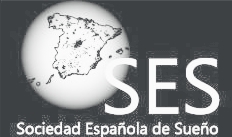Craniofacial syndromes and sleep-related breathing disorders.
Tan HL, Kheirandish-Gozal L, Abel F, Gozal D. Sleep Med Rev. 2015 Jun 6;27:74-88.
Children with craniofacial syndromes are at risk of sleep disordered breathing, the most common being obstructive sleep apnea. Midface hypoplasia in children with craniosynostosis and glossoptosis in children with Pierre Robin syndrome are well recognized risk factors, but the etiology is often multifactorial and many children have multilevel airway obstruction. We examine the published evidence and explore the current management strategies in these complex patients. Some treatment modalities are similar to those used in otherwise healthy children such as adenotonsillectomy, positive pressure ventilation and in the refractory cases, tracheostomy. However, there are some distinct approaches such as nasopharyngeal airways, tongue lip adhesion, mandibular distraction osteogenesis in children with Pierre Robin sequence, and midface advancement in children with craniosynostoses. Clinicians should have a low threshold for referral for evaluation of sleep-disordered-breathing in these patients.
Ventana Científica. Diciembre 2015. Artículo 114
Craniofacial syndromes and sleep-related breathing disorders.


